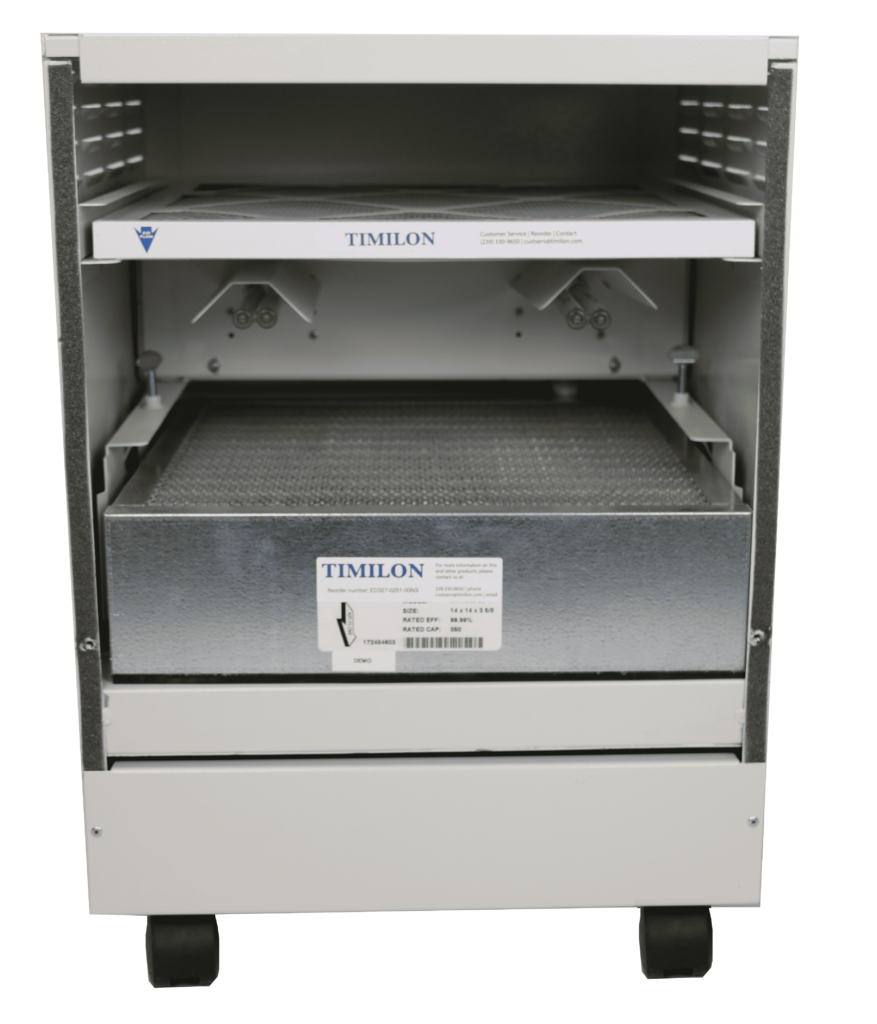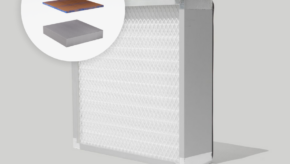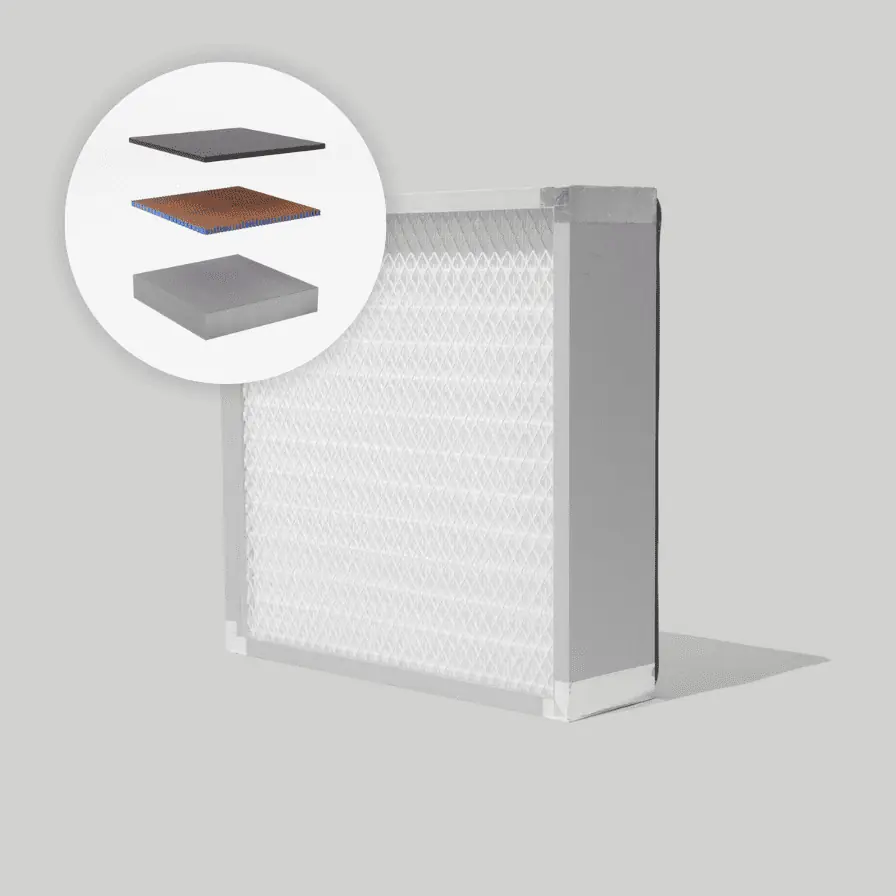Air filtration has never been more important than it is today, as people have gained a heightened concern for airborne pollution such as chemicals, particulates, and even pathogens that can easily float throughout the air. Indoor air quality can become compromised by an array of sources, activities, and items that are found and used in a home – including the occupants in the home themselves who could be a source of spreading airborne germs and bacteria into the indoor air space. When these airborne pollutants enter into your home, they can become trapped in the stagnant air and create compromised indoor air quality levels in this personal indoor space, which can lead to many potential health problems to those exposed to this tainted air for long periods of time.
The remedy to air quality problems today has been the implementation of air purification devices to aid in the mitigation of these airborne pollutants from the air space. Air purifiers are appliances that can be placed in an indoor space like a home to help eradicate and control air pollution levels from the environment. There are a variety of different air purifiers that will work to remove pollutants from the air, such as ionization, carbon, ozone, and other new emerging technologies used today in air purifiers. Many of these traditionally used air purifier technologies can work through the emission of dangerous byproducts into the environment such as ozone which has been found to be an unfavorable addition to your indoor air quality. How can you determine whether or not an air purifier produces ozone and will UV lights in an air purifier play a role in this ozone emission in your home?
In this article we are going to learn more about air purifiers and ozone production, how dangerous ozone emission is in a home, and if UV light air purifiers are safe to use in your home to eradicate airborne pollutants such as pathogens from the air.
What is Ozone in Air Purifier
Air purification technologies that are used today can all consist of various mechanisms and processes that can lead to certain ramifications in the indoor environment, both positive and negative. Although air purifiers will work effectively to trap and contain pollutants allowing for a mitigation to happen to these pollutants within the inside of the air purifier, some of these air purifiers will also release negative byproducts into the air to accomplish this pollutant removal – such as ozone gas. According to the EPA, ozone in air purifiers will work by taking oxygen from the air (O2) and give it a strong electrical charge that will allow the oxygen molecules to rearrange themselves and form ozone (O3). These ozone molecules that are released from the air purifier will work by finding pollutants in the air and attaching that third oxygen atom on the molecule to eliminate it from the air space.
Additionally, ozone gases can also be released from air purifiers when these systems utilize ultraviolet (UV) lights. The use of UV lights in air purifiers has become a popular addition, due to its capability to provide the air purifier with the ability to effectively destroy airborne pathogens such as bacteria, viruses, and mold spores that are captured in the air. However, these UV lights have also been found to produce various levels of ozone into the environment, depending on the wavelength that the UV lights fall within in the air purifier. Therefore, it is important to assess and determine whether or not the air purifier with UV lights is within the safe wavelength range before running it in your home for microorganism and pathogen deactivation.
Is Breathing Ozone Bad?
The impact of ozone on the health of individuals has been studied for decades and has been found to be a pollutant of concern in the environment. More than a hundred different studies have confirmed that ozone will harm a person, specifically the current levels that were found to be in various environments. Thus, when you are purposely or sometimes unintentionally releasing ozone pollutants into your home from you air purification device, you can be working counterproductively against the indoor air quality and the ultimate health of the occupants in this indoor space. Certain groups of people can also be more susceptible to health problems from ozone exposure, such as children and teens, older individuals (65 years or older), and those individuals with pre-existing lung diseases (asthma, COPD, emphysema, etc.).
The inhalation risks of breathing in ozone are significant, especially exposure in large quantities over a long duration of time. According to the American Lung Association, many health problems will occur from ozone exposure such as the following;
- Shortness of breath, wheezing, and coughing
- Asthma attacks
- Increased risk of respiratory infections
- Increased susceptibility to pulmonary inflammation
- Increased need for people with lung diseases, like asthma or chronic obstructive pulmonary disease (COPD), to receive medical treatment and to go to the hospital
How Much Ozone is Safe to Breathe?
The production of ozone is formed in the environment it will be from the combination of nitrogen oxides (NOx) and volatile organic compounds (VOCs) plus sunlight to create the right conditions for ozone emissions. Generally, however, ozone create from air purifiers will usually occur when UV lights or high voltage corona mechanism that will work to convert the oxygen molecules (O2) to ozone (O3) in the air purification device. These ozone producing air purifiers will strategically work to capture airborne pollutants in the air space by using the third oxygen atom to attach to these pollutants and eradicate them. Although this mechanism is beneficial to indoor air pollutant removal, it can become hazardous when people in this indoor space become exposed and potentially breathe in the ozone molecules into their bodies.
The big question becomes, ‘how much ozone is safe to breathe into the human body?’ and really is any ozone exposure healthy? According to the New York State Department of Health, they state that both adults and children who breathe in high levels of ozone for a short period of time (minutes or hours) can experience adverse health effects such as eye, nose, and throat irritation, shortness of breath, chest pain and coughing. Additionally, heightened levels of ozone exposure can also aggravate asthma symptoms and worsen symptoms in those individuals with heart disease. Ozone can also react with other chemicals in the air, even in low concentrations, and this can produce additional chemicals and particles in the air that can cause irritation to the eyes, nose, throat, and lungs. Therefore, both low and high concentration of ozone inhalation can cause potentially damaging effects to human health.
How Long Does It Take for Ozone to Dissipate
If you home has recently been exposed to ozone emissions from an air purifier in this indoor space, then you may be curious as to how long this ozone will stick around in your home’s air. The duration of time that ozone will be present in your indoor air can depend on various factors such as the amount of ozone that has been produced in the space, the air flow in this indoor space, and the ventilation that will allow for the air to become replaced with outdoor air to help alleviate the pollutants in the air. As ozone is being pumped into the indoor environment, it can produce an odor into the air space which has been labeled as “ozone smell” and this smell will often be an irritating factor inside your home.
The ozone smell that is emitted from ozone production in a home is the main reason why people ask how long it takes for the ozone to dissipate in the air. However, this ozone gases can hang around in the air for quite some time, especially in a small enclosed space with little airflow/ventilation. Generally, the ozone can last in the air for several hours and this will lead to increased exposure levels which can be hazardous to the health of those occupants in the space.
Air Purifier and Ozone
As we discussed throughout this article, many air purifiers today will either use ozone technology or produce ozone from some mechanism in their air purification device such as UV lights. This intentional ozone releasing air purifiers work by releasing the ozone molecules into the air that will float in the air space and attach to the pollutants that they come across – such as airborne particles, chemicals, mold, viruses, bacteria, and odors. Many people will look to use ozone air purifiers to help target the removal of bacteria, mold, viruses, and other biological contaminants. However, when ozone concentrations are below the health standards, according to the California Air Resources Board, it will not effectively remove biological contaminants.
When it comes to the levels of ozone produced from ozone generators, the CARB stated that these ozone generators can produce indoor ozone levels several times higher than the State’s outdoor 1-hour and 8-hr health standards of 90 parts per billion (ppb) and 70 ppb. Additionally, when ozone machines produce more than a certain level of ozone into the air (5,000 mg per hour), this can result in very dangerous ozone levels in the indoor air space of the home.
Do UV Lights Produce Ozone?
The use of UV lights in air purifiers has become a popular addition, especially with the heightened risks of pathogen exposure in the indoor air of a home or other indoor space. The capabilities and benefits of UVC light used in air purifiers and other air quality devices can include its ability to kill and destroy viruses in the air that come into contact or exposure with these powerful UVC light. Scientists have known for decades that broad-spectrum germicidal UV light, which has wavelengths between 200 and 400 nanometers (nm), is highly effective at killing bacteria and viruses by destroying the molecular bonds that hold their DNA together.
“According to a new study at the Center for Radiological Research at Columbia University Irving Medical Center (CUIMC). The findings suggest that the use of overhead far-UVC light in hospitals, doctors’ offices, schools, airports, airplanes, and other public spaces could provide a powerful check on seasonal influenza epidemics, as well as influenza pandemics.”
Although UV lights in air purifiers contain a plethora of protection and capabilities, the risks when it comes to the production of ozone from this light is a major risk for indoor environments. Some air purifiers will use different types of UV lights, such as UVA, UVB, or UVC light that will help in the mitigation process of airborne pathogens and microorganism from the air, however, some of these UV light types will produce ozone into the air – which will be determined by the UV light producing wavelengths. UVC lights or germicidal UV are at a much more specific wavelength than what is termed “UV” broadly, and thus why this form of UV light has become one of the safest options when it comes to air purification use.
Germicidal UV Wavelength
UVC are low-pressure lamps, more like a fluorescent lamp, with a specific wavelength of 253.7 nm (1182.5 THz). The production of ozone from UV lights, the light wavelength would need to be at a specific range of 160 to 240 nm. Some air purifiers will fall between this range where ozone will eventually be produced into the airspace of the environment, this can be a potential hazard to both your indoor environment and the health of those who are exposed to this byproduct in the air, particularly in higher levels.

The EnviroKlenz UV Air Purifier, on the other hand, is an air purification system that utilizes ultraviolet germicidal radiation (UV C) but this light has been tested to determine that this specific UV C light does not produce ozone into the air. The EnviroKlenz UV Air Purifier has a wavelength of 254 nm, which is outside the ozone producing range. Additionally, the UV C lights contained in this air purifier is effectively able to shine on the collection of microorganisms such as mold spores, bacteria, and viruses, that are collected on top of the hospital-grade HEPA filter, situated below the UV C lamps within this air purifier.
Article Sources:
- Environmental Protection Agency (EPA): Ozone Generators That Are Sold As Air Cleaners (link)
- American Lung Association: Ozone (link)
- New York State Department of Health: Ozone Generators as Indoor Air Cleaners (link)
- California Air Resources Board: Hazardous Ozone-Generating “Air Purifiers” (link)
- Columbia University Center for Radiological Research: Using the Power of Light: Preventing the Airborne Spread of Coronavirus and Influenza Virus (link)








